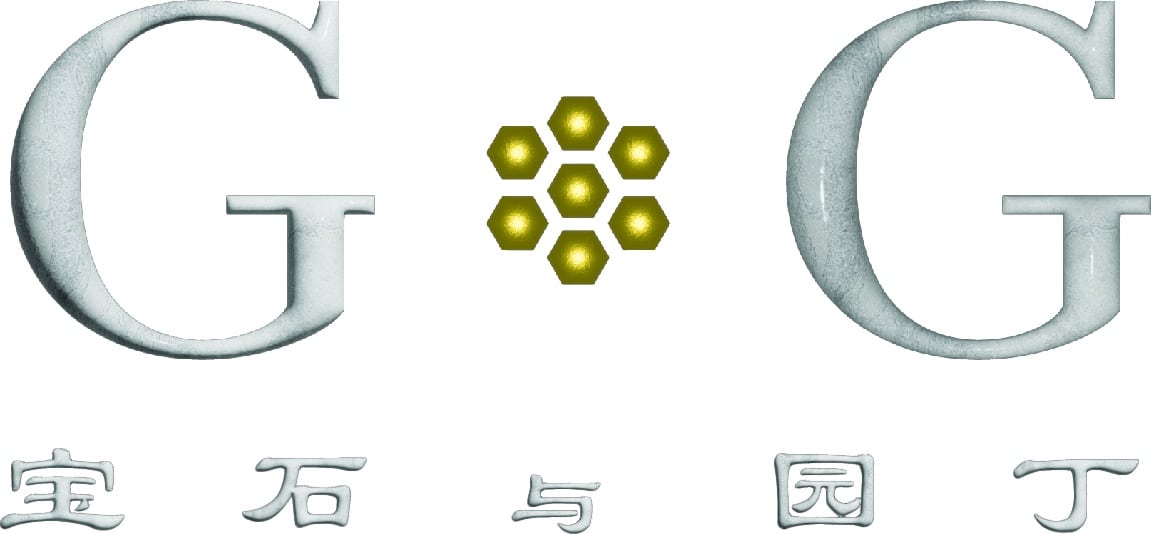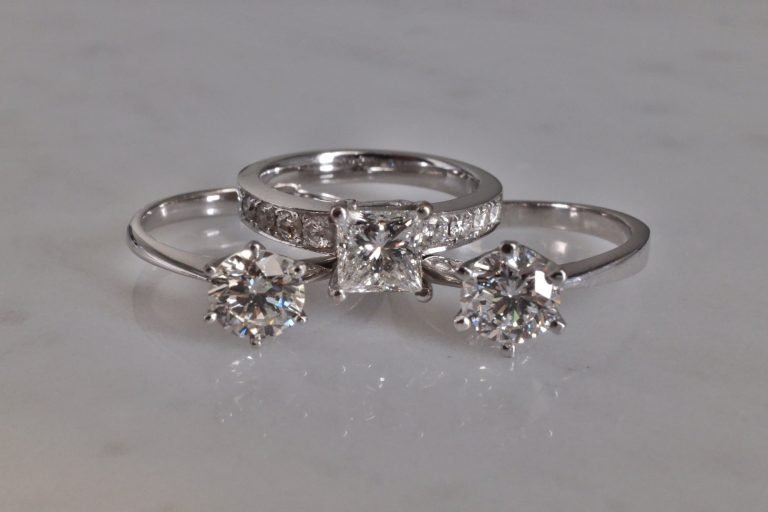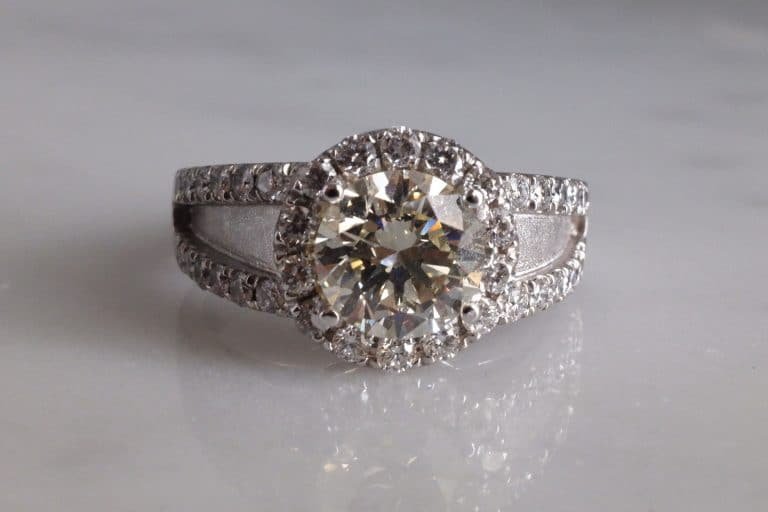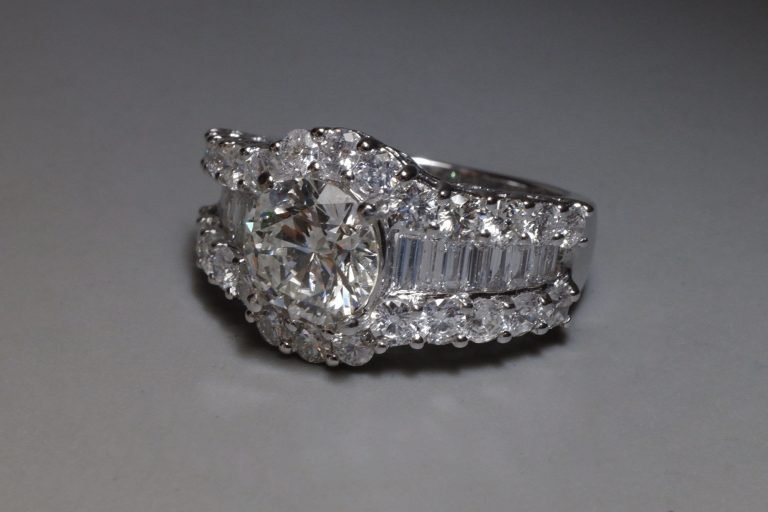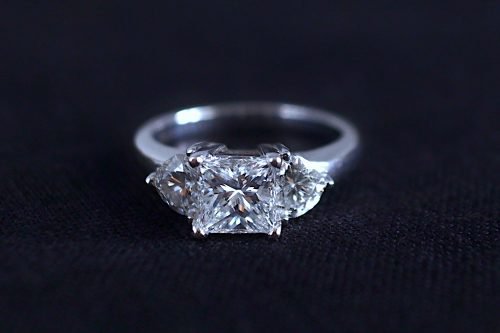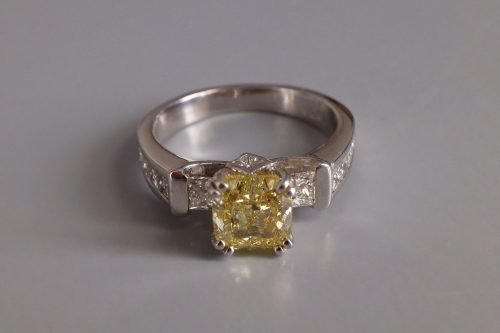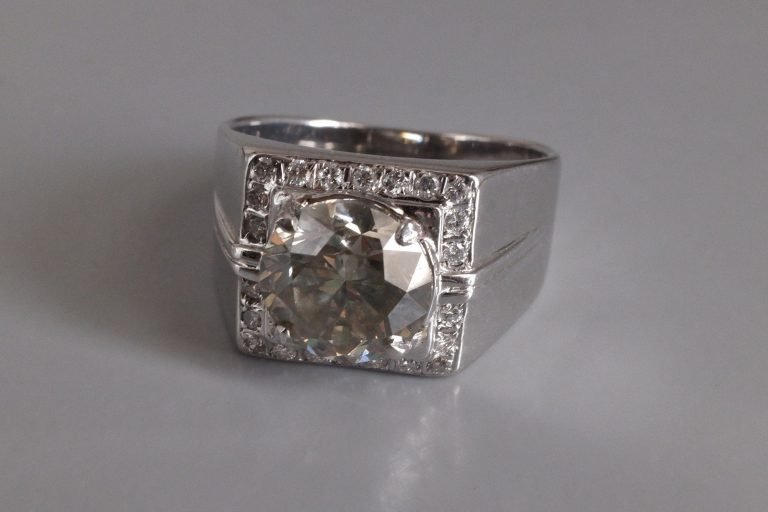How to Buy a Diamond: A Guide for Normal People
The outsider has neither recipe nor compass
That’s how it gets personal
There are no lack of articles on- or offline telling you all about the 4Cs. This is not one.
This resource is gathered from an artistic point of view, for a working consideration when we actually set a diamond into its mount. In short, not all diamonds benefit from a prong setting.
We are not concerned with how to find the perfect diamond. If you have a lot of cash, and a lot of time, you will get in touch with any jeweller you trust and say, show me your best whatever carat D IF TripleEx diamonds!
Most of us do not have a bottomless pit of cash, and we also do not have a lot of time to look for that one white stone out of the many white stones we see.
So, here is our diamond buying guide for normal people.
A bigger, good quality SI diamond is better than a smaller VS diamond
This explains why some rings with diamonds appear totally clean and white, but cost less than a VS diamond.
Which brings us to the next point. These SI diamonds are great for making statement.
It is not uncommon for an SI diamond to be eye clean.
Go for higher color but less clarity
In our experience that most of the time, while you can easily perceive the organic difference in whiteness from diamond to diamond, it is not as easy to pick out the inclusion(s) of a good SI diamond.
In a good SI diamond, you will not be able to see the inclusions unless you really want to.
Our recommendation is to purchase an eye clean I color SI1 diamond, and max out the carat weight for your budget.
Size matters
The Internet is saturated with information about the 4Cs, so much so that many will sacrifice size for the other 3Cs.
Color: For “white” diamonds, “color” is really a scale of how colorless the diamond is. Unless we compare diamonds side by side, we will not be able to tell how colorless a diamond is.
Cut: What we say for color is the same for “cut” – unless you have an extremely trained eye and spend all your time looking at diamonds, all round brilliant diamonds are sparkly.
Clarity: Unless a diamond has very visible inclusions, you won’t be able to see them when it is sitting on a ring on your finger.
Size is visible to yourself and everyone else.
In our experience, a diamond ring that is less than 1ct in size will not “grow” with the wearer. These rings are very often put aside or reset, in favour of an “upgraded” diamond 5 years or less later.
The youthful refrain “I don’t want too big a stone” or “the right size for the hand” will hold less when you know more about stones, jewelry and life, which in all likelihood, will come sooner than you can imagine.
A little foresight will save a little more hindsight.
Forget about GIA reports
I know everyone out there will tell you not to buy a diamond without a GIA report.
What a GIA report does, apart from letting you know the diamond specs, is to help dealers determine the price of a diamond according to an updated monthly price list. This is what it means when we say a diamond is a commodity.
When a diamond does not have a GIA report, the diamond falls outside of this commodity cycle. Usually, a dealer will sell it according to how much s/he paid for it, which means you could be getting a very good deal for a diamond.
So as long as you are buying from someone you trust, and you do not intend to resell your diamond, it is not much of a risk. You could always get a report from a local gem lab.
If you are buying the diamond in Singapore, you can get a gem report from Nanyang Gemological Institute.
Budget for design and craftsmanship
With CAD, jewellers can now produce ring “designs” faster than a Mario Kart race.
Even diamonds are precision cut with computers and lasers.
So precise CAD and precise diamond proportions should result in perfect rings right?
Perhaps, but from the number of CAD cast diamond ring mounts we have thrown into the furnace, we know that a beautiful piece of jewellery that someone wants to keep pass down through generations has nothing to do with perfection.
An heirloom piece of jewellery is always made at the bench by hand.
That the stone is spectacular is a given, that the design does not let down the stone must be a design imperative.
Or risk a crass object of lust.
In short, here lies two unsurprising reactions to ‘statement’ or ‘high jewelry’ pieces:
Good design will make a small stone look expensive.
Bad design will make a big stone look cheap.
A diamond is truly a very apt gem in a statement ring, hence many have chosen to go with it in their lifelong ring.
For the jewelry first timer, it is prudent to go with a classic design. We have seen too many do-too-much-too-soon on their engagement ring, only to wear it for a while, before resetting or dreaming of a more timeless ‘upgrade’.
An engagement ring is itself memorable, a statement without needing to be a fancy statement ring. The obliging is of course welcomed, but not obliged.
After the lure of colors in so many possible gems to have and to behold, the allure of a diamond is self explanatory. Strangely, this happens, just how much earlier or later in life.
Jewelry collectors can attest this, hence statement pieces never stall in finding home after home.
A small but expensive stone will wait forever.
The 4Cs
If you don’t already know, the 4Cs are:
- Cut
- Color
- Clarity
- Carat
Many would disagree, but in most cases, we only care about carat, color, and clarity.
Visit the GIA website to read about the prevailing consensus regarding diamond quality.
Colored Diamonds & Fluorescence
This 2ct yellow diamond ring displays strong blue fluorescence under UV light. The observable result of this phenomenon is that the diamond appears almost white in sunlight, and once indoors, it turns vivid yellow again.
Imagine a 5ct grey VS diamond
It is beautiful not in an ordinary way. It actually looks and feels more luxurious, if only because it is hard to tell a 5 carat white diamond from one that is a lab created.
The point is this:
For a large diamond, go for Cut and Clarity, but go down on Color. This is because by size alone, the diamond on a well-crafted mount will sizzle from its design.
Nobody is going to notice that this diamond is not white, they are just going to eye the big shiny thing on the hand, which is the effect we need not worry about.
How much should I budget for design and craftsmanship?
A ring can be built by hand or through casting. A well-built ring, in platinum, built by hand, should have a working budget of SGD5k.
This is just for the work, which may include or exclude the finding and provision of accent stones, which in turn will depend on design complexity and how accessible these stones are.
Sometimes, this SGD5k fee may or may not include ‘design’, as sometimes a simple design does not require actual design, but what will distinguish it from a regular ring is its craftsmanship.
In this case, the ‘design’ bit is actually what we charge for craftsmanship. Unfortunately, this is not a transparent cost revealed to the customer since the working process is not the same from jeweller to jeweller. We really do mean to say, how do you measure, hence quantify, the eye for aesthetics?
Form and Function are the slaves of aesthetics, also why one ring works for one person and the exact same made will not work for another, even if the design is seemingly precise.
Form and Function is the reason why the same design will be made differently for different hands, and that is the most critical yet lesser-known difference between Bespoke and Custom.
While the custom ring will fit you, bespoke will distinguish your ring.
As an artistic jeweller, from the beginning, we always worked to a bespoke outcome. We cannot change that now, it is how we have come to be, person to personal.
Simple Designs
If your ring will be a simple design and you do not believe its design to require distinction, you can budget for less, say SGD3k for a 18k ring. Again, this does not include any accent stone(s).
